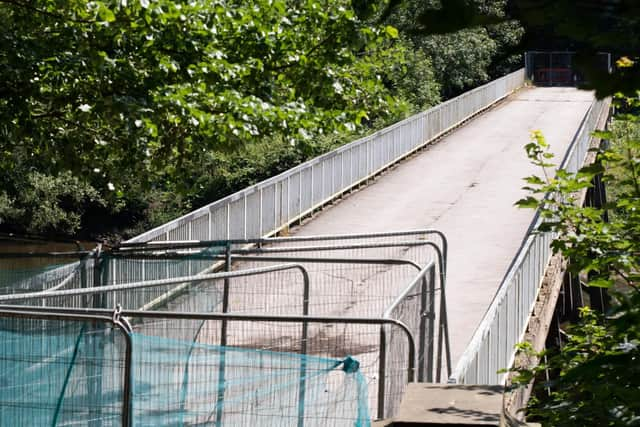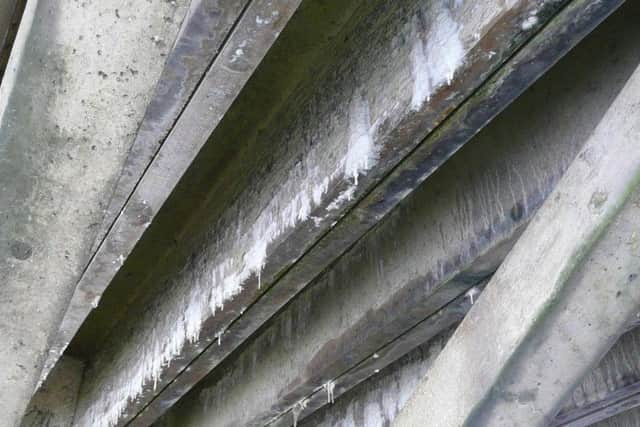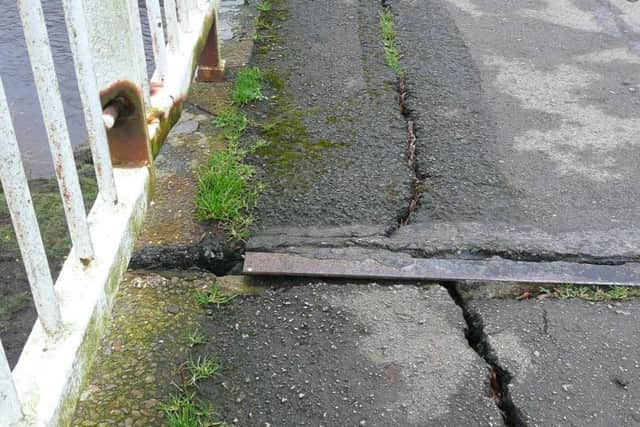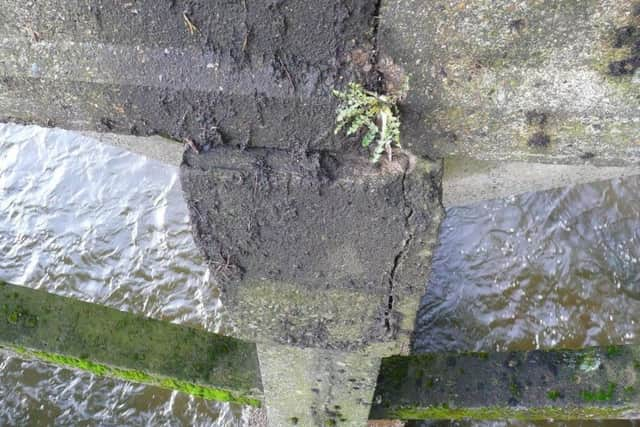PICTURES: Five reasons why Preston's Old Tram Bridge is at risk of partial collapse


Some of the most serious defects relate to some of the most recent additions to the bridge - the specially designed concrete beams which were installed in the mid-1960s.
A bridge first stood on this spot in 1802 and lasted until flood waters largely destroyed it in 1935. Its replacement had a timber deck, just like the original. But that was replaced in 1966 with beams made out of pre-stressed concrete.


Advertisement
Hide AdAdvertisement
Hide Ad“Concrete is strong in compression, but weak in tension,” Lancashire County Council’s bridges manager, Dave Hurford explains.
“If you don’t reinforce it somehow, the beam will just fail.”
That reinforcement came in the form of wires which were put under significant amounts of stress and then cast in the concrete. But on the Old Tram Bridge, the process has not stood the test of time.
Here, Dave explains what has gone wrong with the beams and other aspects of the iconic bridge.


1. Cracking in the concrete beams
Advertisement
Hide AdAdvertisement
Hide Ad“There are mechanisms going on which are causing the concrete to become weaker. The stressing wires are embedded in the concrete - and if you’ve got cracks in the concrete, you’ve got a path for moisture to get at the wires, so they will potentially start corroding.
“If the wires are under a massive amount of load and they then start rusting away, eventually they will just go bang, because there is not enough material left to hold the load.
“[The bridge] relies on the bond between the wires and the concrete to transmit the force between the two and as the wires rust, they lose that bond - so the pattern of cracking on the beams is quite concerning.”


2. Beam connections appear to have failed
“There is a crack separating the edge beam from the first of the internal beams. The design is such that there are supposed to be plates welded between the top of the beams which can act together, rather than independently - so if those connections fail then they become like piano keys and there is no load spread across the bridge. That means the beams can’t rely on one another for support.
Advertisement
Hide AdAdvertisement
Hide Ad“If you’ve got a crowd loading, for example [people] leaning on the bridge parapet, it’s not dispersing that load back into the body of the deck - and so the whole lot is at risk of the beams rolling off their supports.”
3. Beams are not seated correctly


“If you build a bridge these days, all the piers are parallel to each other, but on this bridge they’re all over the place - the span lengths are slightly different and aren’t parallel.
“So when the 1960s beams have been placed onto the 1930s piers, they don’t all sit properly on the supports and all the load of the beam is concentrated over a much smaller area. Some of the concrete has already gone from around some of the beams. At the moment, none of the beams have dropped, but the risk is that one of them will drop out.”
4. Piers and struts in poor condition
“When the bridge had a timber deck, it had the characteristic raking struts which you see on the bridge now - they were propping up the wooden deck
Advertisement
Hide AdAdvertisement
Hide Ad“Now it’s got these pre-stressed beams, the struts are structurally redundant, but they've been preserved, partly because they are cast into the piers and partly because they give the bridge character, I presume.
“The connection of the strut into the deck is quite exposed and a lot of them are quite seriously corroded. Nowadays, the reinforcement would be continuous where they connect into the pier between the pier legs and the struts. When this bridge was built in the 1930s, that continuity was not there, so a number of struts have already fallen off and there’s a danger others might, too.


“We also found that while the struts were not in danger of collapsing, there were large areas of concrete which were.”
5. Corroded parapets
Dark patches [indicate] perforation by corrosion - the parapet rails are weakened by corrosion, so if there was a crowd leaning on them, there is a risk they might give way.